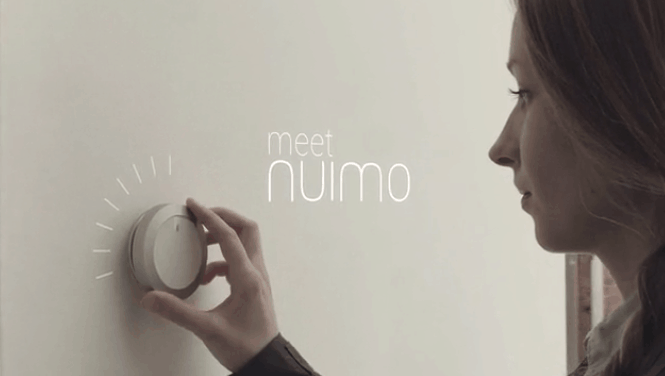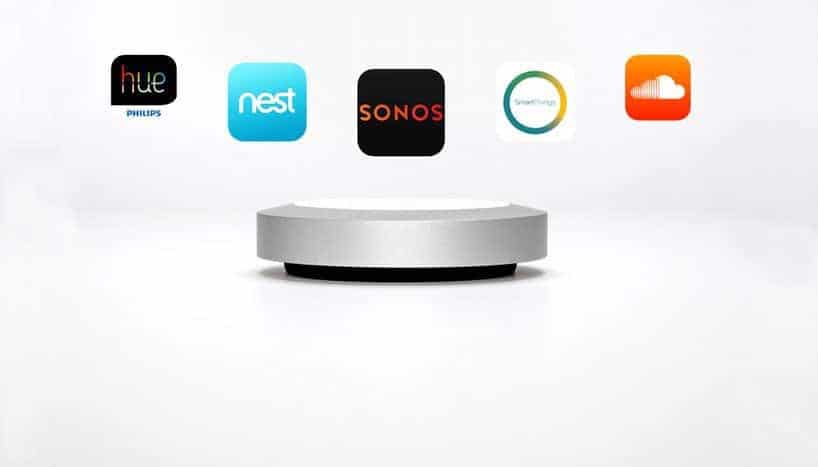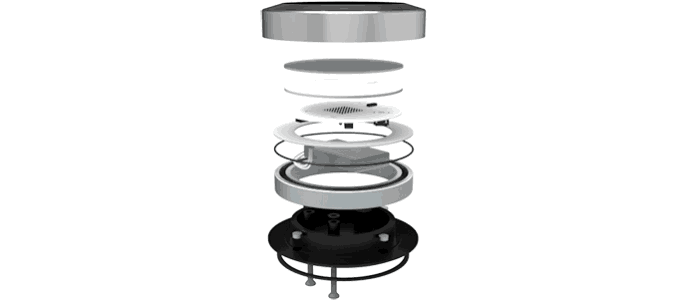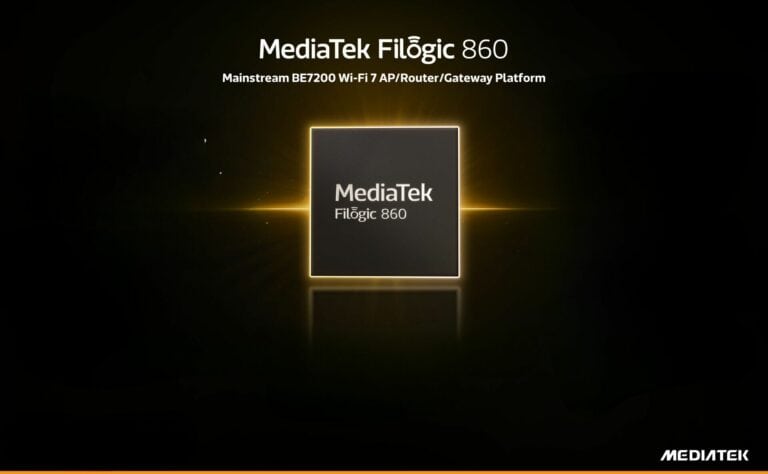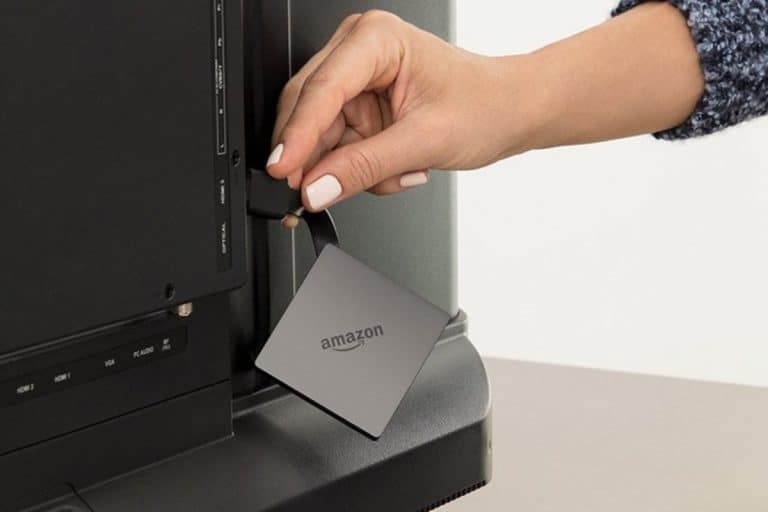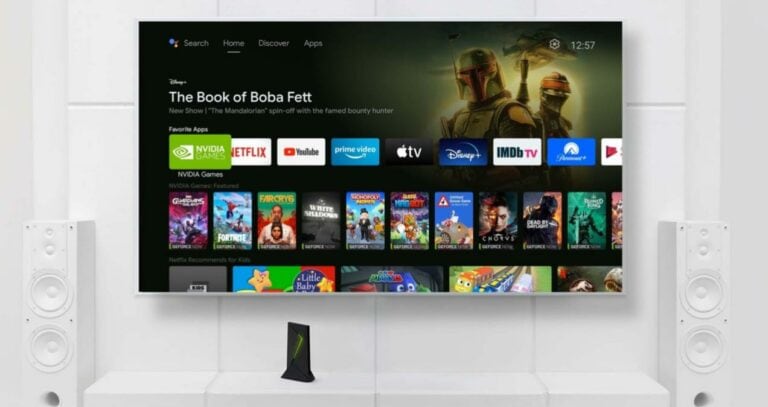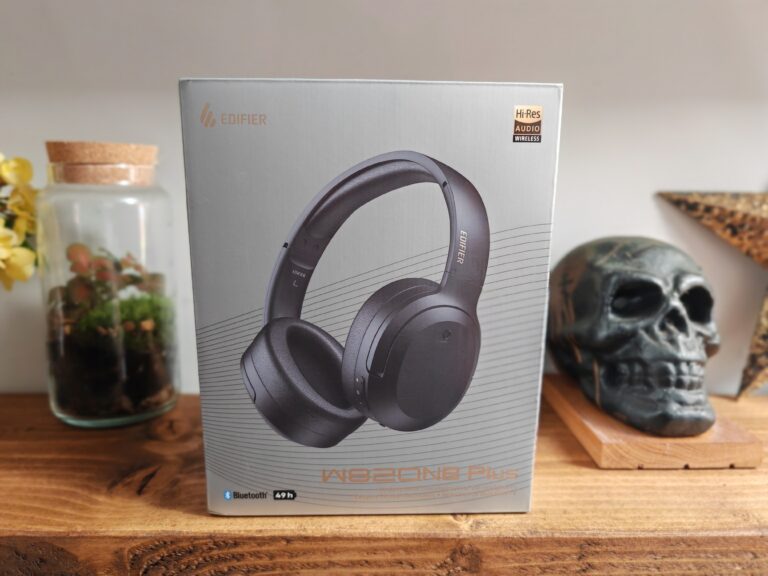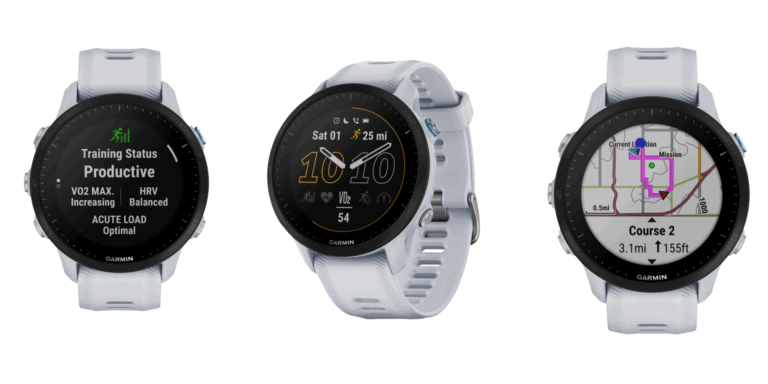Any links to online stores should be assumed to be affiliates. The company or PR agency provides all or most review samples. They have no control over my content, and I provide my honest opinion.
Nuimo by Senic is one of the more exciting products I have been able to review this year. It is a smart controller that integrates with Philips Hue, Sonos and several other systems.
It isn’t actually a controller in the normal sense of home automation, but more like a smart home interface. For example, you can’t set up schedules or anything like that, but you can use it to directly control your Sonos.
The Nuimo is a beautifully designed and made aluminium puck shape, with a smooth scroll wheel running around its edge and a LED display for visual feedback. You interact with the Nuimo via physical contact by touching, scrolling, swiping etc., or more interestingly using gestures.
Some quick facts I received from Senic about it include:
- Nuimo is made from glass-bead blasted aluminium and double-hardened acrylic glass.
• Integrated with more than 30 devices and applications
• Bluetooth 4.1, compatible with Apple TV, Android TV, iOS and Android
• Indoor range of up to 20 meters
• Battery Life: 1-month average life on a single charge. Rechargeable with supplied micro USB cable.
• Input options: physical click, high-precision rotary ring, touch interface and gesture control
• Output: 9×9 LED matrix for visual feedback
• Control light, speakers or other devices by switching mode with a vertical swipe over the surface
• Magnets included for mounting on a refrigerator or can be mounted on a wall with the magnetic wall plate
• Honoured with the German Design Award 2016 & Red Dot Design Award 2016
• Designed and manufactured in Germany – process can be seen at bit.ly/MakingNuimo
I’d like to re-iterate that the build feels exceptional, and it really is beautiful in a minimalist way. Even the packaging is minimalist, coming in a relatively plain cardboard box. The rotate volume ring is just SO smooth with a great weighting too.
Initially, the Nuimo can only be set up for Philips Hue, Sonos, LIFX and Raumfeld, but it is fully customisable with an active developer community. If you are technical and don’t mind fiddling with some scripts you can get it doing all sorts of things.
The Nuimo is paired to your phone so you have to have that with you. I only used it with my phone, but I read online that the Nuimo can be paired with multiple phones and it will use whichever is within range.
One user from AV Forums wrote:
“I have set my second Nuimo up to talk to a Raspberry Pi on which I run Domoticz. I’ve then written a small wrapper for Sonos, Kodi and Hue, as well as my Amp and TV (which both have IP based control) in NodeJS which allows me to completely customise the functionality of every gesture. I’ve even got custom icons on the led display to make the status much easier to understand, and the switching between modes straightforward and wife/kid friendly.
Senic has a GitHub page located at github.com/getsenic
It is also possible to tether it to your computer and use it to control Apps within your computer. In fact, this was the original design for it when it was originally named Flow. Obviously, the developers saw greater potential with the device and expanded from here.
In terms of day to day use, it does take a little getting used to. One of the biggest issues I found was its sleep mode. After a few minutes the device goes to sleep to conserve battery, but when you touch it again, it takes a little while to wake up. It’s not a long time, but there is a noticeable lag. It uses Bluetooth LE, so the battery should last a while, Senic claims it will last 1 months, which is more than fine by me. I’d charge it weekly if it meant no lag between inputs. It does charge on the bottom, though, via MicroUSB, which I find a little odd for something that was originally designed for PC input. It would be nice to charge it while it sitting flat on my desk. This would presumably have negative effects on the excellent design, though.
The gestures are also tricky to master, the first few times of use I was just creating random events with no idea what’s going on. It is very easy to carry out a gesture, move your hand away and inadvertently create a new gesture.
However, once you are used to it, it does make a great interface for your devices. I work at a computer desk all day, so having it beside me to control my lighting and music is great.
OK, it doesn’t really save me so much time controlling my devices that it justifies its price, but I find this is an issue with home automation in general. I’ve only recently got the Philips Hue, and only spent £100 or so on the basics, but it is a lot of money to spend just to avoid manually controlling my lights. I feel like this is true for every home automation gadget out there.
The back of the Nuimo is magnetised, and Senic sends a mounting plate with it including some 3M tape to easily mount it to whatever surface you want. This is a nice little feature as you can have a base location in the kitchen or office but then carry it around with you as needed.
Overall, this is a fun and beautiful addition to the home of a smart home aficionado. It doesn’t really do anything that you can’t do via your phone, but it makes simple tasks even more convenient, which is what home automation is really about.
Priced at €199.00/£169 it is expensive, but not painfully so. If you have forked out for a Sonos system and Philips Hue, you are probably used to paying a premium.
With there being open development on the Nuimo, it can only get better. It would be great for dozens of devices to be supported and lots of custom scripts freely available.
I am James, a UK-based tech enthusiast and the Editor and Owner of Mighty Gadget, which I’ve proudly run since 2007. Passionate about all things technology, my expertise spans from computers and networking to mobile, wearables, and smart home devices.
As a fitness fanatic who loves running and cycling, I also have a keen interest in fitness-related technology, and I take every opportunity to cover this niche on my blog. My diverse interests allow me to bring a unique perspective to tech blogging, merging lifestyle, fitness, and the latest tech trends.
In my academic pursuits, I earned a BSc in Information Systems Design from UCLAN, before advancing my learning with a Master’s Degree in Computing. This advanced study also included Cisco CCNA accreditation, further demonstrating my commitment to understanding and staying ahead of the technology curve.
I’m proud to share that Vuelio has consistently ranked Mighty Gadget as one of the top technology blogs in the UK. With my dedication to technology and drive to share my insights, I aim to continue providing my readers with engaging and informative content.

